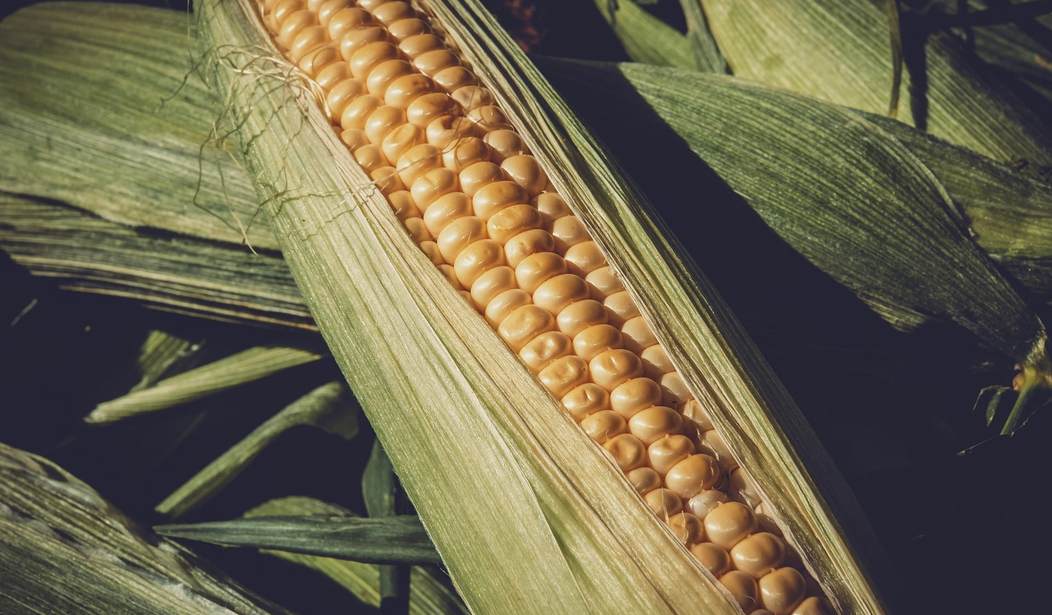Last week, a Native American botanist argued that the genetic modification of crops is a form of rape. Perhaps the next step in the #MeToo movement involves returning to the low crop yields before the Green Revolution, which saved billions of lives by making food more available through genetic modification, among other things.
Robin Wall Kimmerer, a botanist, member of the Citizen Potawatomi Nation, and director of the Center for Native Peoples and the Environment at SUNY-Syracuse, called corn “one of our deepest and oldest relatives.” In an interview with Wisconsin Public Radio, she humanized corn as the “Corn Mother,” saying, “Corn is sacred because she gives us her children in return for protecting us.”
Kimmerer wasn’t talking about the sweet corn Americans love to eat today, but rather the native corn that comes in hundreds of varieties. She contrasted this wild corn with the genetically modified corn her neighbor grows.
“There’s a word for forcible injection of unwanted genes,” Kimmerer said. “Rape.”
This botanist does not just humanize corn — she wishes to enlist it in the #MeToo movement.
Wisconsin Public Radio noted that the sweet corn “has been altered by agribusiness,” but the article did not mention the role genetically modified corn has played in the Green Revolution, which has been credited with saving one billion lives and averting the doomsday prediction of Paul Ehrlich’s The Population Bomb.
In the 1960s, plant disease expert Norman Borlaug spearheaded research into new farming methods that supercharged agriculture and fed the people whom Ehrlich predicted would starve. Borlaug’s dwarf wheat resisted a wide spectrum of pests and diseases and produced two to three times more grain than traditional varieties. In Pakistan, wheat yields rose from 4.6 million tons in 1965 to 8.4 million tons in 1970. In India, they rose from 12.3 million tons to 20 million tons.
In 1968, Ehrlich had predicted that “India couldn’t possibly feed two hundred million more people by 1980.” Since Ehrlich’s prediction, India’s population has more than doubled, its wheat production has more than tripled, and its economy has grown nine-fold. India fed far more than 200 million more people. Ehrlich secretly omitted this prediction from later editions of The Population Bomb.
Borlaug won the Nobel Peace Prize in 1970 for his work on the Green Revolution. He has arguably saved more lives than anyone else in history, and he did it through genetic modification.
The Green Revolution combined genetic modification with new fertilizers and agro-chemicals, controlled water supply, and added new mechanical cultivation. These new methods may strike an advocate for native practices as strange or even barbaric, but they’ve saved more than a billion people across the world.
Those who wish to see corn as a sacred “Corn Mother” represent a return to the ancient animistic view of the world. Treating plants as sentient beings may sound hip and “progressive,” but Kimmerer’s rejection of genetic modification is backward, and it could be dangerous. Would she really want to reverse the Green Revolution and bring back pre-modern levels of starvation?
Does Kimmerer really mean to accuse Norman Borlaug, the man who arguably saved more human lives than anyone else in history, of rape?
In the most recent sexual assault allegation against Supreme Court Justice Brett Kavanaugh, the woman who was supposedly the victim denied having any recollection of the assault. It seems the insentient corn Kimmerer wishes to defend from “rape” would be similarly silent in the case against Norman Borlaug.
Follow Tyler O’Neil, the author of this article, on Twitter at @Tyler2ONeil.









Join the conversation as a VIP Member